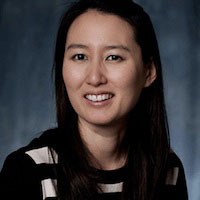Can Online Education Fix the Gender Diversity Problem in Engineering?
We need to address 50 percent of the population’s needs. A lot of products are not aptly designed for women and it’s not enough just to color things pink.
Dr. Luna Magpili, Associate Professor at Washington State University
Most people are aware of the gender gap in science and technology fields, with women just representing about one-fourth of the science, technology engineering and math (STEM) workforce. Many are also under the impression that the proportion of women in STEM is growing, slowly but surely.
While it’s true that over the last decade the number of women choosing STEM majors in college has increased, data shows that this rise hasn’t been enough to make a difference in the actual gender gap. Why? Well, as the number of jobs in STEM fields have grown, so have the number of men majoring in STEM subjects.
Because the number of men and women entering into STEM subjects are increasing at similar rates, the percentage of women versus men graduating with STEM degrees has stagnated around 25 percent over the last five years. It’s good news that an increasingly large pool of women are entering these subjects every year, but the fact that the disparity persists is concerning.
When you look specifically at engineers within the larger umbrella of STEM, the statistics are even more dismal; women represent only 11 percent of engineers in the U.S. This is a small positive change from 9 percent in 2015, but if this rate were to remain constant, we wouldn’t see gender parity in the engineering workforce until around 2060.
We talked to two female doctors of engineering from two of the top colleges of engineering in the state of Washington—home to the Seattle hub of tech giants like Microsoft and Amazon—to ask them why we should continue to push for more female representation in the STEM field and how we can do better to ease the path of entry for girls and women into these careers.
Meet the Professors: Dr. Luna Magpili and Dr. Amy Kim

Dr. Luna Magpili currently serves as panel reviewer to various programs at the National Science Foundation (NSF), NASA, and the U.S. Department of Defense (DoD). Additionally, she is a referee to various journals, such as Risk Analysis, Environmental Science and Technology and Environmental Monitoring and Assessment. She earned her MS in industrial engineering from the University of Philippines and her doctorate in systems engineering from University of Virginia. At Washington State University, (WSU) Dr. Magpili is an associate professor within the engineering and technology management department, where she teaches classes like statistics, operations research and analytics, and risk management.

Dr. Amy Kim is an assistant professor at the University of Washington (UW) with almost a decade of experience working as an architect and project engineer on large public infrastructures in Chicago. She obtained her MS in civil engineering from Illinois Institute of Technology and a PhD in civil engineering from Texas A&M University after studying architecture in her undergraduate years. Dr. Kim’s current research focuses on human-centric design and renewable energy systems. She teaches classes in UW’s department of civil and environmental engineering such as construction engineering and sustainability in building infrastructure.
Why Is Gender Balance in Engineering Important?
The answer to this question may seem obvious to some, but it’s important to reaffirm why gender disparity is a problem worth addressing. First, as society is becoming increasingly digitally-dominated, the job market is following suit. Seven out of the 13 best paying, most in-demand jobs in the U.S. will require degrees in engineering, according to Business Insider. So one real concern has to do with women’s future opportunities and financial stability, but it doesn’t stop there.
Without female scientists’ and engineers’ perspectives, the results translate to a society with products and infrastructure that have shown to put women at a disadvantage.
“We need to address 50 percent of the population’s needs,” Magpili said. “A lot of products are not aptly designed for women and it’s not enough just to color things pink.”
But in more extreme cases, the lack of female voice in the design process can literally be fatal.
One sobering example Magpili mentioned comes from data about car crashes, which is detailed in an article from The Guardian: While men are more likely to be involved in car crashes, women are shockingly 47 percent more likely to be seriously injured and 17 percent more likely to die than men are when they are involved in crashes.
The cause is directly related to cars’ designs. Car seats have been majoritively designed by men and tested with dummies based on the size of the 50th-percentile male. It wasn’t until 2011 that the U.S. began to use female crash-test dummies, but The Guardian questions how the physical attributes of these new female dummies even measure up to actual women.
This is one of the most extreme instances of how the lack of a female perspective on engineering teams can negatively affect women—but there are dozens more that women experience in their daily lives. The size of smartphones and power tools are designed to fit in a larger hand, speciality sports and military wear often exclude women’s sizes, and even the design of buildings, like public toilet stalls and the average temperature-settings of office buildings are created based on male preference. These little details add up to a world that caters, if unintentionally, to men.
“There are just other design aspects that women might see a little bit differently and add value there, as well,” Kim said.
If that’s not enough, there’s a third reason we should by pushing for gender parity in engineering: it just makes good business sense.
“Diversity is associated with improved productivity, creativity and improved sales and profits,” Magpili said. “In the engineering field, creativity is really important because we solve problems, design solutions, troubleshoot, try and make things work. The process wouldn’t work if people thought alike.”
So, the more diversity we have on engineering teams, the more well-thought out the designs of our products will be.
“Gone are the days of the lone scientist or lone engineer,” Magpili said. “Our field is very collaborative. It requires a high level of coordination and communication, and women in particular are good at communicating and excel there.”
What is Causing the Stagnation in Engineering?
The answer goes deeper than the fact that men are entering engineering programs in increasing numbers. Kim points to the lingering stereotypes that exist about engineers and says that girls should be more exposed to and educated about the many niches within engineering.
“Students can sometimes get the wrong impression. With civil engineering, everybody thinks of hard hats when looking at construction workers in Seattle, where we have a large bridge project going on, but it’s more than that,” she said.
In a TED Talk, Debbie Sterling, an engineer, businesswoman and advocate for women in STEM delved further into the misconceptions people have about engineers being either Mark Zuckerberg-esque geniuses or train drivers in cover-alls—neither of which is relatable to the most girls exiting high school and exploring potential career paths in college.
“There’s subtlety within that degree and the types of jobs or careers you can have and I want the students to be more exposed to that right when they get here,” Kim said. “[At UW], we do activities to expose students to different careers … you may be the person who loves construction, but maybe sustainability is your thing. Understanding all these details will help you determine what you want.”
Magpili adds that as a society, we need to continue to work on busting the myth that girls aren’t as mentally apt to math and science as boys. If you think this stereotype is behind us, just look at the data. In most countries, girls surpass boys in math. However, in the U.S., boys consistently outperform girls. This is no biological gender difference in aptitude for mathematics and sciences—it’s a troubling cultural phenomenon.
Experts describe it with the term “self-efficacy,” which is one’s personal belief that they can perform well in a certain subject. It’s human nature for people to approach domains where they feel the most capable, and on the opposite end, to avoid those in which they don’t. On average, girls tend to have much lower self-efficacy in STEM because of gender stereotypes and a lack of female representation, role models and mentors.
“The bias starts early on—in the grade school level,” Magpili said. “Girls seem to think they don’t fit with math and science. I volunteer a lot in the schools here and they say they’re not good enough because they are girls. There’s an active movement trying to get that mentality out.”
And sadly, many young women that do pursue studies in engineering become discouraged and end up changing their majors.
“There’s a leaky pipe—girls who get into STEM but then they leave. I think that’s even more of a problem,” Magpili said. A whopping 32 percent of women switch out of STEM degree programs in college, a third of them citing “organizational climate” as the reason.
In her TED Talk, Sterling described an experience during her time as an engineering student at Stanford in which she almost changed her major. In a class of 80-some men and five young women, a professor had students post their designs up on the wall for critique—an assignment that Sterling recounts spending an entire weekend working on.
“When the professors went around the room and got to my drawing they took a look at it and took a look out to the room and said ‘Raise your hand if you think Debbie should pass the class.’ I stood there beet-red, humiliated, looking around…the room was silent,” she said. “The tears were streaming down my face and I ran out of the classroom.”
The traumatic experience was enough to rock Sterling’s confidence and nearly led her to give up studying engineering. “I thought, ‘This isn’t for me. I’m not naturally good at this stuff. Maybe I should just give up engineering.’ A lot of girls in their college career around this time think the same thing,” she said. Sterling decided to persevere, but many women let the imposter syndrome they experience as a minority group in STEM get the best of them.
So the question emerges, what can we do to both encourage girls’ interest in STEM subjects and ease their entry into STEM careers? An innovation in education may be the key to finally achieve a noticeable difference in the stagnation of female representation.
How Online Programs Can Improve Gender Equity
These days, online engineering degrees are offered by many reputable universities, from short certificates to undergraduate and master’s degree programs, covering subjects like computer science, technology management, civil engineering, and many others.
Could the growing prevalence of this new learning medium help draw more women to careers in STEM?
Research shows that the anonymity of an online learning environment can have a positive effect on students’ learning experience because it removes the perceived risk students feel of judgement from peers and teachers exemplified in Sterling’s experience at Stanford.
“It’s just an uncomfortable environment [for women] when there are so few of you,” Magpili said. “With the online option, there’s that feeling that there’s some kind of anonymity… most people don’t put up pictures or videos, so women and other individuals appreciate this equal footing in the classroom.”
Perhaps the anonymity that online learning grants could help draw more girls and women toward STEM studies and even reduce the 32 percent rate of exodus of women changing their majors from engineering.
Another hugely beneficial aspect of online study? Flexibility. When Kim was pursuing her master’s and doctorate studies, which overlapped with her starting a family, she said she was lucky enough to have an employer that let her adjust her work schedule to accommodate her classes.
“It worked out for me, but that’s not always the case. There are these family priorities that women have to think about as well,” she said. “I think as a mom, online [programs] open up a lot of opportunities.”
Magpili said that her students—many of whom live abroad, travel often for work, or have young families—have expressed this same sentiment to her.
“I had ‘ah-ha’ moment where one of my students talked to me after class and said ‘You know what? I would never have thought of taking a master’s degree if I wasn’t doing it through your program.’ I was very intrigued. She said, ‘I just had a baby and I’m stepping into this new leadership position at work, so I have no time to drive to campus.”
The freedom to design your own schedule that online study allows is universally appealing, but for full-time mothers, it could be the make-or-break factor in whether or not they can feasibly undertake an educational program.
WSU and UW both offer various online graduate-level degrees in engineering, which Kim says is a great way for professionals to re-up their skillsets.
“The industry and academics change over time and there are a lot of exciting graduate-level courses you can take online,” Kim said. “With online platforms nowadays, and the flexibility you get from them, it’s just a win-win situation for everybody.”
But for those that are looking at undergraduate level or certificate programs, there are also dozens of universities that offer bachelor’s degrees fully or partially online.
Magpili encourages girls interested in pursuing an education in engineering to research the many different avenues available. “Talk to your science teachers and utilize those resources at school. You should be able to pick and find the right fit for you if you get informed. It’s like buying a shoe—you’ve just got to put them on to see how they feel.”
As Sterling said of her own experience, success in any field comes down to one thing. “I realized it’s not about being a born genius. It’s about how hard you work.”
